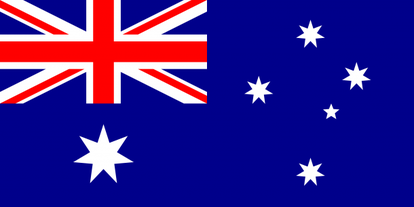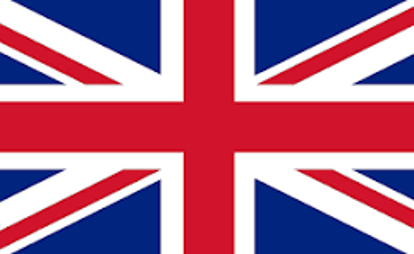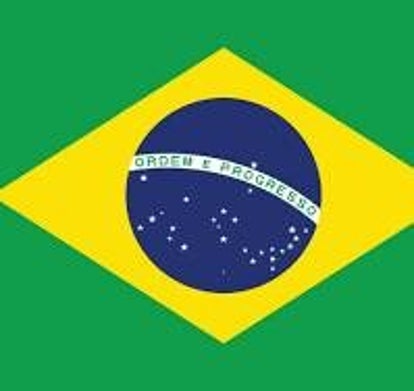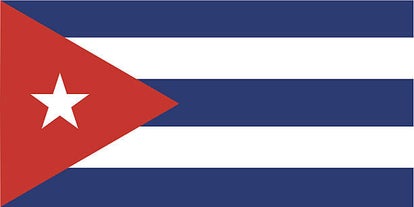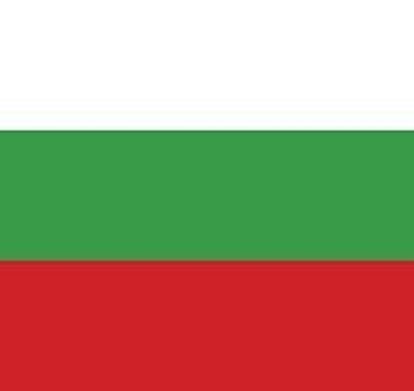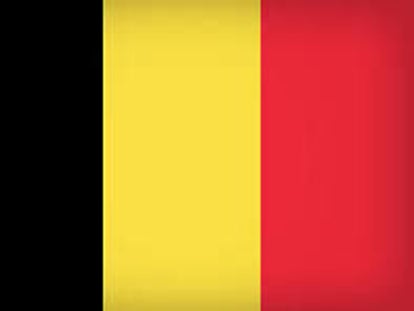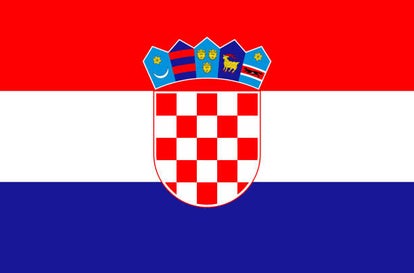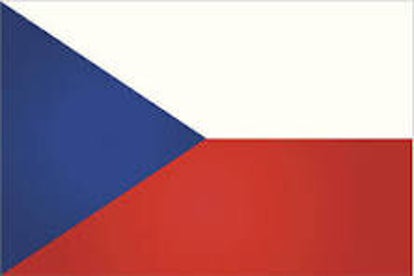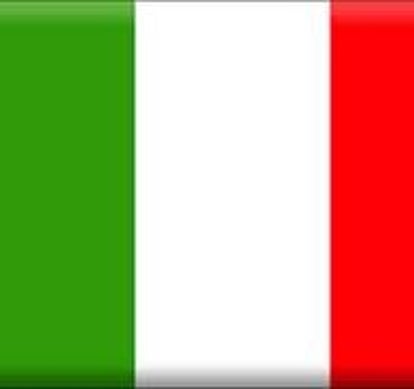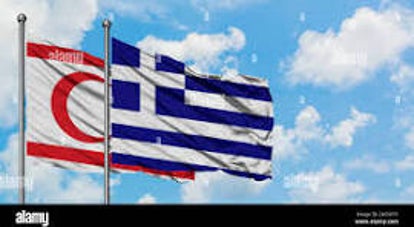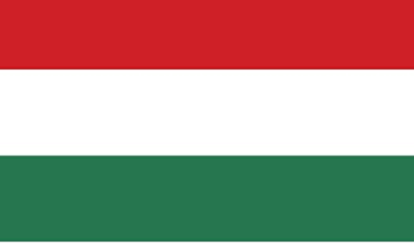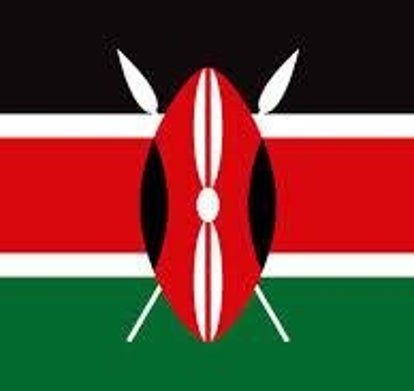An arrangement of the national anthem of Australia for Symphony Orchestra made for the Orchestre national d'Île-de-France. There are versions for Brass Quintet, String Orchestra in my store. "Advance Australia Fair" is the national anthem of Australia. Written by Scottish-born Australian composer Peter Dodds McCormick, the song was first performed as a patriotic song in Australia in 1878. It replaced "God Save the Queen" as the official national anthem in 1974, following a nationwide opinion survey, only for "God Save the Queen" to be reinstated in January 1976. However, a plebiscite to choose the national song in 1977 preferred "Advance Australia Fair", which was in turn reinstated as the national anthem in 1984. "God Save the Queen" became the royal anthem (later "God Save the King" on the accession of King Charles III), and is used at public engagements attended by the King or members of the monarchy of Australia. The lyrics of the 1984 version of "Advance Australia Fair" were modified from McCormick's original and its verses were trimmed down from four to two. In January 2021, the official lyrics were changed once again, in recognition of the long habitation of Indigenous Australians.
The British National Anthem "God Save the Queen" , arranged for the Orchestre national d'Île-de-France.
Love anthems then join me on twitter, facebook, soundcloud & instagram for updates. "God Save the King" (alternatively "God Save the Queen" when the British monarch is female) is the national anthem of the United Kingdom and the royal anthem of each of the British Crown Dependencies, one of two national anthems of New Zealand, and the royal anthem of most Commonwealth realms. The author of the tune is unknown and it may originate in plainchant, but an attribution to the composer John Bull has sometimes been made.
Brazillian National Anthem for Symphony Orchestra (Orchestre national d'Île-de-France edition)
Brazillian National Anthem for Symphony Orchestra (Orchestre national d'Île-de-France edition)
Brazillian National Anthem for Symphony Orchestra (Orchestre national d'Île-de-France edition).
The "Brazilian National Anthem" (Portuguese: Hino Nacional Brasileiro) was composed by Francisco Manuel da Silva in 1831 and had been given at least two sets of unofficial lyrics before a 1922 decree by president Epitácio Pessoa gave the anthem its definitive, official lyrics, by Joaquim Osório Duque-Estrada, after several changes were made to his proposal, written in 1909.
The anthem's lyrics have been described as Parnassian in style and Romantic in content.
The Chinese National Anthem as performed by the Orchestre national d'Île-de-France. The "March of the Volunteers", originally titled the "March of the Anti-Manchukuo Counter-Japan Volunteers", has been the official national anthem of the People's Republic of China since 1978. Unlike previous Chinese state anthems, it was written entirely in vernacular Chinese, rather than in Classical Chinese.
An arrangement of the Cuban National Anthem for the Orchestre national d'Île-de-France. "El Himno de Bayamo" (English: "The Bayamo Anthem", lit. 'The Hymn of Bayamo"') is the national anthem of Cuba. It was first performed in 1868, during the Battle of Bayamo. Perucho Figueredo, who took part in the battle, wrote and composed the song. The melody, also called "La Bayamesa" (English: "The Bayamo Song"), was composed by Figueredo in 1867.
Azerbaijan National Anthem for Symphony Orchestra (Nordwestdeutsche Philharmonie Edition), featuring double woodwind akin to my Orchestre national d'Île-de-France edition).
"Azərbaycan marşı" is the national anthem of Azerbaijan. The music was composed by Uzeyir Hajibeyov, and the lyrics were written by poet Ahmad Javad or cultural figure and politician Jamo bey Hajinski. The government officially adopted the anthem in 1920, with the passage of the decree, "On the State Hymn of the Republic of Azerbaijan". In 1992, after the fall of the Soviet Union, Azerbaijan's government officially restored "Azərbaycan Marşı" as the national anthem.
The Azerbaijan government has also officially declared the national anthem to be "the sacred symbol of the Azerbaijan state, its independence and unity."
Since 2006, a fragment of the lyrics is depicted on the obverse of the 5 manat banknote. In 2011, to mark the 20th anniversary of independence, a stamp featuring the lyrics was issued.
The Bulgarian National Anthem arranged for full Orchestra, as performed by the Orchestre national d'Île-de-France.
"Mila Rodino" (Bulgarian: Мила Родино, [ˈmiɫɐ ˈrɔdino]; lit. 'Dear Motherland') is the national anthem of Bulgaria. It was composed and written by Tsvetan Radoslavov as he left to fight in the Serbo-Bulgarian War in 1885 and was adopted in 1964. The text has been changed many times, most recently in 1990. On 12 July 1991 the anthem was shortened to its first verse along with the chorus.[2]
Between 1886 and 1947, the Bulgarian national anthem was "Shumi Maritsa"; from 1951 to 1964, it was "Balgariyo mila, zemya na geroi"; in the brief period between these two, it was the march "Republiko nasha, zdravey!".
An arrangement for Symphony Orchestra of "La Brabançonne" for the Orchestre national d'Île-de-France. "La Brabançonne" is the national anthem of Belgium. The originally French title refers to the Duchy of Brabant; the name is usually untranslated in Belgium's other two official languages, Dutch and German.
The Canadian National Anthem as performed by the Orchestre national d;Ile-de-France.
“O Canada” came into being in 1880, 100 years before it became Canada’s National Anthem.
The song was commissioned by the Lieutenant-Governor of Quebec, the Honourable Théodore Robitaille, to mark the Saint-Jean-Baptiste Day celebrations in the City of Québec on June 24, 1880, a performance which was also meant to honour the Congrès national des Canadiens français (National Congress of French Canadians).
An arrangement of the Croatian National Anthem for the Orchestre national d'Île-de-France. "Lijepa naša domovino" (Croatian: [ljêːpa nâʃa domǒʋiːno]; "Our Beautiful Homeland") is the national anthem of Croatia. Often simply referred to as "Lijepa naša" ("Our Beautiful") in Croatia, it is a phrase widely used as a metonym for the country.[
An arrangement of the beautiful and melancholic Czech National Anthem arranged for the Orchestre national d'Île-de-France. Kde domov můj" - "Where My Home Is") is the national anthem of the Czech Republic, written by the composer František Škroup and the playwright Josef Kajetán Tyl.
An arrangement of the Danish National Anthem for the Orchestre national d'Île-de-France. "Der er et yndigt land", lit. 'There is a lovely land') is one of the two national anthems of Denmark.
The French National Anthem as performed by the Orchestre National de France.
"La Marseillaise" is the national anthem of France. The song was written in 1792 by Claude Joseph Rouget de Lisle in Strasbourg after the declaration of war by France against Austria, and was originally titled "Chant de guerre pour l'Armée du Rhin"[b] ("War Song for the Army of the Rhine").
The German National Anthem as performed by the Orchestre national d'Île-de-France. The "Deutschlandlied" has been the national anthem of Germany either wholly or in part since 1922, except for a seven-year gap following World War II in West Germany. In East Germany, the national anthem was "Auferstanden aus Ruinen" ("Risen from Ruins") between 1949 and 1990.
An arrangement of the Iranian National Anthem made for the Orchestre national d'Île-de-France.
The National Anthem of the Islamic Republic of Iran was adopted in 1990, replacing the previous anthem used during the rule of Ruhollah Khomeini. It was composed by Hassan Riyahi, and the lyrics were written by Sayed Bagheri. It is the fourth official Iranian national anthem.
An arrangement of the Italian National Anthem for the Orchestre national d'Île-de-France, scored with double woodwind.
"Il Canto degli Italiani" - "The Song of Italians") is a patriotic song written by Goffredo Mameli and set to music by Michele Novaro in 1847,cur rently used as the national anthem of Italy. It is best known among Italians as the "Inno di Mameli" ("Mameli's Hymn"), after the author of the lyrics, or "Fratelli d'Italia" from its opening line. The piece, in 4/4 time signature and B-flat major key, has six strophes, and a refrain sung after each. The sixth group of verses, almost never performed, recalls the first strophe's text.
An arrangement of the New Zealand National Anthem for the Orchestre national d'Île-de-France.
The Norwegian National Anthem for the Orchestre national d'Île-de-France.
"Ja, vi elsker dette landet" English: "Yes, we love this country") is the Norwegian national anthem. Originally a patriotic song, it came to be commonly regarded as the de facto national anthem of Norway in the early 20th century, after being used alongside "Sønner av Norge" since the 1860s. It was officially adopted in 2019.
The lyrics were written by Bjørnstjerne Bjørnson between 1859 and 1868, and the melody was written by his cousin Rikard Nordraak sometime during the winter of 1863 and 1864. It was first performed publicly on 17 May 1864 in connection with the 50th anniversary of the constitution. Usually only the first and the last two verses are sung, with the first being by far the most common.
The Polish National Anthem arranged for the Orchestre national d'Île-de-France with Double Woodwind.
The music is an unattributed mazurka and considered a "folk tune" that Polish composer Edward Pałłasz categorizes as "functional art" which was "fashionable among the gentry and rich bourgeoisie". Pałłasz wrote, "Wybicki probably made use of melodic motifs he had heard and combined them in one formal structure to suit the text.
An rrangement of the Slovenian National Anthem made for the Orchestre national d'Île-de-France, with double woodwind.
The national anthem of Slovenia is based on "Zdravljica" [zdraʋljìːt͡sa], a carmen figuratum poem by the 19th-century Romantic Slovene poet France Prešeren, inspired by the ideals of Liberté, égalité, fraternité, and set to music by Stanko Premrl. As the country's national anthem, it is one of the state symbols of Slovenia.
The Spanish National Anthem as performed by the Orchestre national d'Île-de-France.
The Marcha Real or the 'Royal March') is the national anthem of Spain. It is one of only four national anthems in the world – along with those of Bosnia and Herzegovina, San Marino and Kosovo – that have no official lyrics. Although many different lyrics have been made for it in the past, it has never had official lyrics as a national anthem.
The Swiss National Anthem Orchestre as performed by the national d'Île-de-France.
The Swiss Psalm was composed in 1841 by Alberich Zwyssig (1808–1854). Zwyssig used a tune he had composed in 1835 and slightly altered the words of a poem written in 1840 by Leonhard Widmer [de] (1809–1867).
An arrangement of the Dutch National Anthem as performed by the Orchestre national d'Île-de-France. Though only proclaimed the national anthem in 1932, the "Wilhelmus" already had a centuries-old history. It had been sung on many official occasions and at many important events since the outbreak of the Dutch Revolt in 1568, such as the siege of Haarlem in 1573 and the ceremonial entry of the Prince of Orange into Brussels on 18 September 1578.
An arrangement of the Greek & Northern Cypriot National Anthem ''Hymn to Freedom'' for the Orchestre national d'Île-de-France.
The "Hymn to Liberty" had been the Greek royal anthem after 1864. "Hymn to Liberty" has been the national anthem of Cyprus since 1966. "Hymn to Liberty" has been performed at every closing ceremony of the Olympic Games, to pay tribute to Greece as the birthplace of the Olympic Games.
An arrangement of the Hungarian National Anthem as performed by the Orchestre national d'Île-de-France.
The anthem was adopted in 1844, while Hungary was still a part of the Austro-Hungarian Empire. The title of the Hungarian anthem is often (incorrectly) given as the first line of the anthem,”Isten, áldd meg a magyart”, but the title of the poem (“Himnusz”) is the official title of the anthem. While the poem has eight verses, it is almost always just the first verse that is performed, yet the entire poem remains the official anthem.
An arrangement of the Jamaican National Anthem for the Orchestre national d'Île-de-France.
"Jamaica, Land We Love" is the national anthem of Jamaica, officially adopted in July 1962. It was chosen after a competition from September 1961 to 31 March 1962, in which the lyrics of the national anthem were selected by Jamaica's Houses of Parliament. When Jamaica was granted independence on 6 August 1962, "Jamaica, Land We Love" continued to be officially used as the national anthem.
An arrangement of the Japanese National Anthem for the Orchestre national d'Île-de-France Edition.
"Kimigayo" is the national anthem of Japan. The lyrics are from a waka poem written by an unnamed author in the Heian period (794–1185), and the current melody was chosen in 1880, replacing an unpopular melody composed by John William Fenton in 1869. While the title "Kimigayo" is usually translated as "His Imperial Majesty's Reign", no official translation of the title or lyrics have been established in law.
An arrangement of Kenyan National Anthem for the Orchestre national d'Île-de-France.
Ee Mungu Nguvu Yetu"'s lyrics were originally written in Kiswahili, the national language of Kenya. The commission responsible for its creation included five members and was headed by the Kenya Music Adviser. The anthem was based on a traditional tune sung by Pokomo mothers to their children.
"Ee Mungu Nguvu Yet" is notable for being one of the first national anthems to be specifically commissioned. It was written by the Kenyan Anthem Commission in 1963 to serve as the state anthem after independence from the United Kingdom. The lyrics was intended to express the deepest convictions and highest aspirations of the people.
Serbian National Anthem Polish National Anthem (Orchestre national d'Île-de-France Edition)
Serbian National Anthem Polish National Anthem (Orchestre national d'Île-de-France Edition)
An arrangement of the Serbian National Anthem for the Orchestre national d'Île-de-France, with double woodwind.
"Bože pravde" is the national anthem of Serbia, as defined by the Article 7 of the Constitution of Serbia. "Bože pravde" was adopted in 1882 and had been the national anthem of the Kingdom of Serbia until 1919 when Serbia became a part of the Kingdom of Serbs, Croats and Slovenes. It was re-adopted as the national anthem at first by the parliamentary recommendation in 2004 and then constitutionally sanctioned in 2006, after Serbia restored its independence.
An arrangement of the South Korean NA (Orchestre national d'Île-de-France Edition), with Double woodwind.
"Aegukga" - "Patriotic Song", Hanja: 愛國歌), often translated as "The Patriotic Song", is the national anthem of the Republic of Korea. It was adopted in 1948, the year the country was founded. Its music was composed in the 1930s and arranged most recently in 2018; its lyrics date back to the 1890s.
An arrangement of the Swedish National Anthem made for the Orchestre national d'Île-de-France.
Despite the belief that it was adopted as the national anthem in 1866, no such recognition has ever been officially accorded. A kind of official recognition came in 1893, when King Oscar II rose in honor when the song was played. In 2000, a Riksdag committee rejected a proposal to give the song official status as "unnecessary". The committee concluded that the song has been established as the national anthem by the people, not by the political system, and that it is preferable to keep it that way.
The USA (Star Spangled Banner) National Anthem as performed by the Orchestre national d'Île-de-France.
"The Star-Spangled Banner" is the national anthem of the United States. The lyrics come from the "Defence of Fort M'Henry", a poem written by American lawyer Francis Scott Key on September 14, 1814, after he witnessed the bombardment of Fort McHenry by the British Royal Navy during the Battle of Baltimore in the War of 1812. Key was inspired by the large U.S. flag, with 15 stars and 15 stripes, known as the Star-Spangled Banner, flying triumphantly above the fort after the battle.
All the national anthems on this page were especially arranged for the Orchestre national d'Île-de-France by yours truly. They all have double woodwind parts & have all been performed & recorded by the ONDF in France. My anthems have also been performed under the baton of Semyon Bychkov with the Czech Philharmonic and Prague Philharmonic Choir, the New York Philharmonic under Herman Blomsetdt, Los Angeles Philharmonic & many more. It doesn't get any better than that!
1) Czech Philharmonic: https://www.youtube.com/watch?v=XkcKTH84d44
2) San Antonio Symphony: https://www.youtube.com/watch?v=-Rtu3_lOk_U
3) New York Philharmonic: https://www.youtube.com/watch?v=6r1oVa3_Nt4
4) Longwood Symphony: https://www.youtube.com/watch?v=2clexEkiet8&list=RDMM&index=5
5) Western Australia Symphony Orchestra: https://www.youtube.com/watch?v=hrLDUHKh3pk
6) Orchestre National de France: https://www.youtube.com/watch?v=25PrUiajLbU
7) NDR Elbphilharmonie Orchestra: https://www.youtube.com/watch?v=bJkh8JSU0FI
8) Leinster House Ireland: https://www.youtube.com/watch?v=uvoWLwSF9eo
9) Trafalgar Square: https://www.msn.com/en-us/news/other/prayer-for-ukraine-london-flashmob-orchestra-shows-solidarity-through-music/vi-AAUIkXd
10) Trafalgar Square: https://www.msn.com/en-us/news/world/musicians-in-london-play-ukrainian-national-anthem/vi-AAUJZ2c
11) Trafalgar Square: https://www.msn.com/en-us/news/good-news/uk-anti-war-protesters-sing-ukrainian-national-anthem/vi-AAUI8p8
12) Symphony 21: https://www.youtube.com/watch?v=qswERixcLdc&t=1s
13) Kennedy Centre https://www.youtube.com/watch?v=-k-XqR4g-_o
14) Las Vegas Phil: https://www.youtube.com/watch?v=XuVV_IN14co
15: Mid Columbia SO: https://www.youtube.com/watch?v=eFD8AfL_XS4
16: UBC SO:https://www.youtube.com/watch?v=Q5_vZrZ8bHo
17: https://www.youtube.com/watch?v=VFUbn3luA2A Violin & Piano
